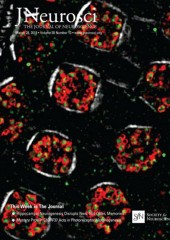Giandomenico Iannetti, Patrick Haggard, Giacomo Novembre, Vijay M. Pawar, Rory J. Bufacchi, Marina Kilintari, Mandayam Srinivasan, John C. Rothwell, "Saliency detection as a reactive process: unexpected sensory events evoke cortico-muscular coupling", in Journal of Neuroscience, N° 38, fév. 2018, pp. 2385-2397
Résumé
Survival in a fast-changing environment requires animals not only to detect unexpected sensory events, but also to react. In humans, these salient sensory events generate large electrocortical responses, which have been traditionally interpreted within the sensory domain. Here we describe a basic physiological mechanism coupling saliency-related cortical responses with motor output. In four experiments conducted on 70 healthy participants, we show that salient substartle sensory stimuli modulate isometric force exertion by human participants, and that this modulation is tightly coupled with electrocortical activity elicited by the same stimuli. We obtained four main results. First, the force modulation follows a complex triphasic pattern consisting of alternating decreases and increases of force, time-locked to stimulus onset. Second, this modulation occurs regardless of the sensory modality of the eliciting stimulus. Third, the magnitude of the force modulation is predicted by the amplitude of the electrocortical activity elicited by the same stimuli. Fourth, both neural and motor effects are not reflexive but depend on contextual factors. Together, these results indicate that sudden environmental stimuli have an immediate effect on motor processing, through a tight corticomuscular coupling. These observations suggest that saliency detection is not merely perceptive but reactive, preparing the animal for subsequent appropriate actions.

